BGET - Esbit Tray Stove
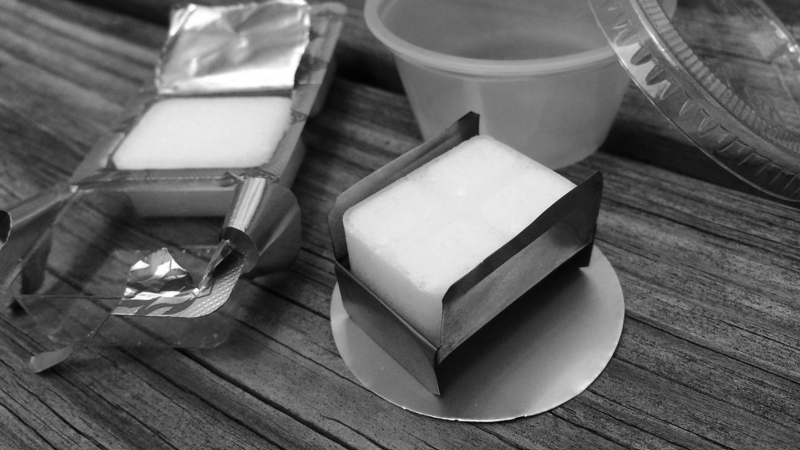
I have a love-hate relationship with Esbit fuel tabs. I want to love them, I really do, but they seem to never work quite right for me so I end up getting frustrated and hating them.
Short Burn Times
You may recall that a few weeks ago I posted a blog article about my frustration with the consistently poor burn times (typically under 7mins per tab) that I was experiencing with my Esbit tabs. In fact my results were so bad that I reached out to Campmor to inquire if they'd had a bad batch of Esbits or any other reports of poor performance? They hadn't, but without hesitation they sent me replacements for all three boxes that I had bought from them (BTW - Campmor customer service has always been superb).Upon testing one of the 'new' Esbit tabs I got the same results as before, suggesting that it was not actually the fuel tabs themselves but rather the stove I was using or possibly the way I was using them.
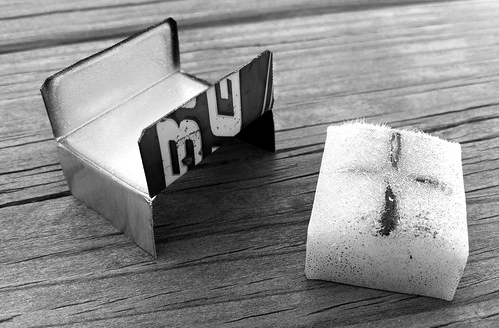
Stove Testing
All this time I had been using a MYOG Esbit stove design based on the titanium ones that both John Roan of Mountain Ultralight and JJ of JERMM's Outside had recently each made and written about. My stove, while identical in design to the ones that John and JJ were using, was made from an aluminum Bud Light beer bottle instead of titanium foil.
I was pretty sure that the difference in material was not the cause of the drastically reduced burn rates that I had been experiencing. A comment on my previous blog post from Chad (aka Stick of Stick's Blog) mentioned that he was using the Ti Esbit Folding Stove that had a tray style holder in the center of the stove that captured the liquid that is released from a burning Esbit tab. He concluded that the reason he was getting 15 minute plus burn times from each fuel tab was probably due to the liquid fuel continuing to burn. The extremely simple stove I had made did not capture the Esbit liquid fuel as it was released during the burn - in theory reducing the potential burn time.
I was also very fortunate to receive a GVP/Caldera-Keg stove setup from Martin Rye (Summit and Valley Blog) that included a genuine, still sealed, UK Esbit tab. Thanks Martin! However, when I used the Esbit tab that Martin had sent me in my MYOG Esbit stove, I got the same lousy burn time - further proof that my stove was a POS. I tested one of my old (bad) fuel tabs in the stove that Martin sent me and got a burn time of over 12 minutes right off the bat! #$@!^$
A Better Esbit Stove
Not wanting to simply copy the stove that John had made, but this time using titanium foil instead of aluminum, I decided to come up with an entirely new titanium stove design - one that would incorporate the tray aspect that Chad had mentioned.
I knew that I would eventually want to make the final version out of shiny new titanium foil, for weight and the obvious Ti cool factor, so I ordered a 22”x6” roll of the 0.005” thick titanium foil from Titanium Goat ($14).
Meanwhile, I began drawing a template for the new design that I had in my head. My intent was to make a variation of the one-piece stove that John had created, but with the addition of a small tray to catch the liquid fuel. I created a template at actual size using Adobe Illustrator, printed it out on paper and quickly made a mockup of the stove using… yes you guessed it, aluminum from a Bud Light beer bottle. If you hadn't already figure it out, I have a LOT of Bud Light aluminum beer bottles. Note: I don't drink Bud Light, but the aluminum bottles are excellent for all types of MYOG projects, like stoves!
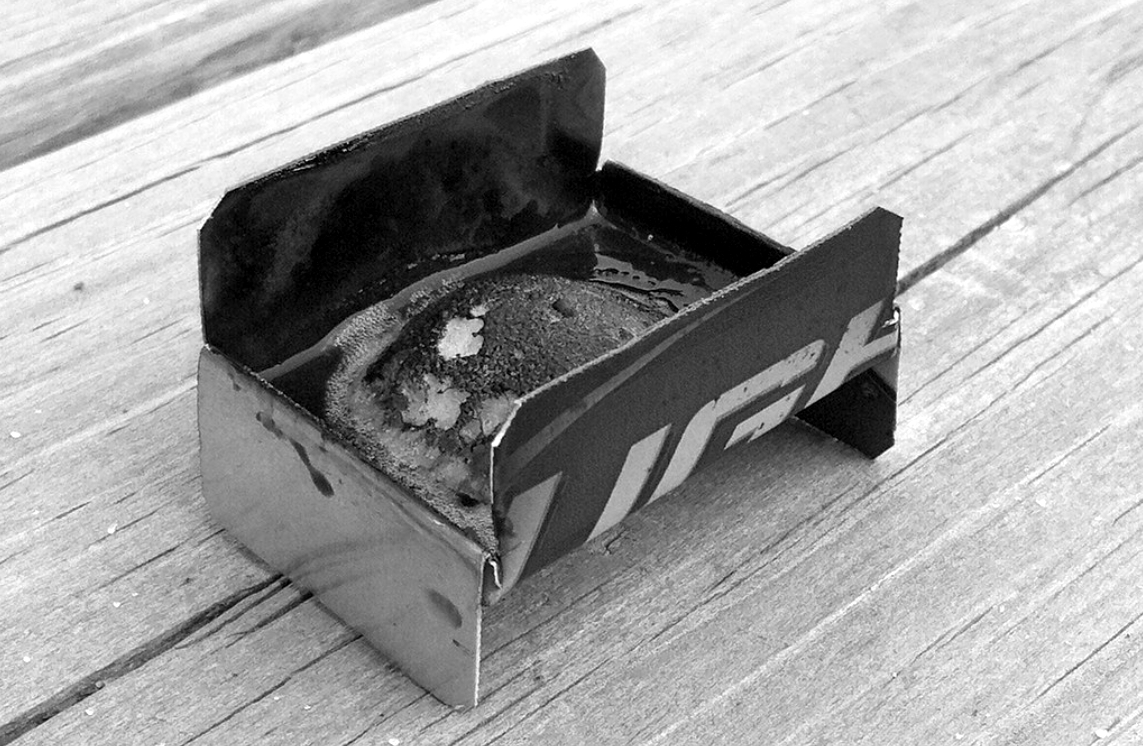
It's by no means pretty, but to my utter amazement, the very first Esbit tab that I burned in this prototype (which was from my old stock of supposedly bad fuel tabs) burned for over 15 minutes! In fact I was so surprised by this that I burned another three Esbit tabs in it just to make sure it wasn't a fluke. It wasn't.
So the concept of capturing the liquid fuel from the burning Esbit tab seemed to be pretty sound. I made a few minor adjustments to the template to allow for a fraction more room for the fuel tab to sit better in the stove.
Hat's off to Titanium Goat for a speedy and efficient deliver process. My new roll of titanium foil showed up just three days after ordering using standard shipping. I set to work making a titanium version of the same tray stove.
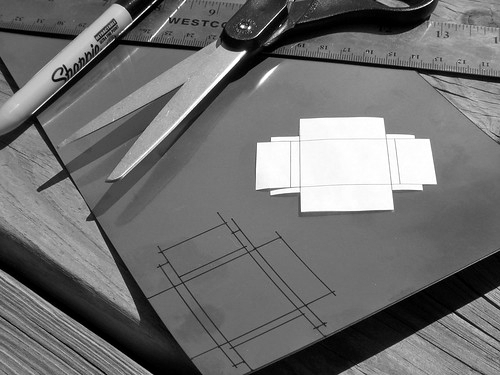
If you've never used titanium foil before for making a windscreen or any other MYOG project, you might be surprised to learn that it can be cut very easily with just a good pair of ordinary scissors. You can punch holes using a standard hole punch that you would use for paper, with a little extra effort. You don't necessarily need a lot of expensive tools to work with it.
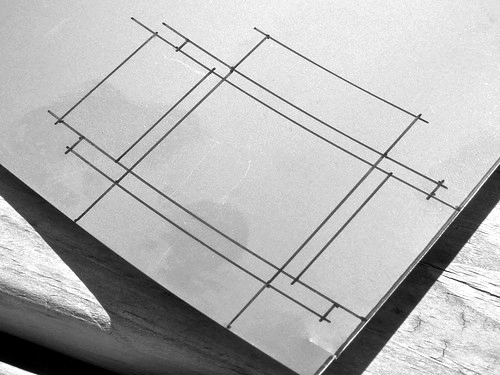
The Ti foil I bought was about the same thickness as a sheet of standard printer paper, so it's very easy to make a prototype out of paper first. Once you have it right in paper form you can trace it directly onto the titanium foil and begin cutting it out.
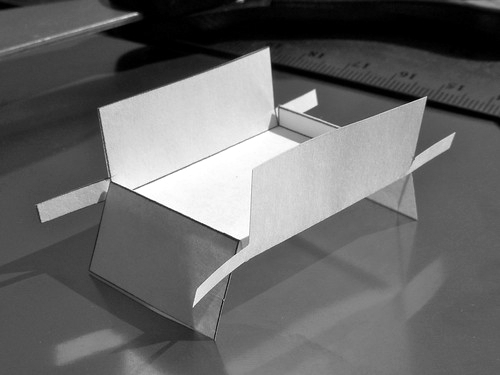
Here is a paper prototype of the Esbit tray stove showing the long side flaps that extend out from the two vertical side panels and which will eventually be tucked under the two end flaps that make up the legs of the stove.
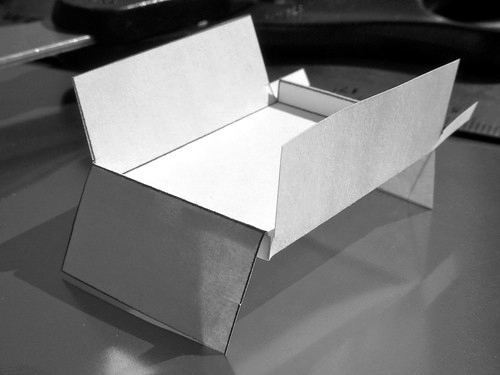
This is the same paper prototype with the long flaps folded under the legs of the stove to form a quasi-sealed corner for the tray that will stop the liquid fuel from dripping out (lesson learned from a previous attempt). If it isn't immediately obvious by looking at these photos, I was having a lot of fun playing with this project.
Using a pair of cheap paper scissors that I didn't care too much about, I started cutting out the titanium version of the stove paying close attention not to over cut any of the joints. The stove is really small and it is very easy to accidentally snip off the thin flaps.
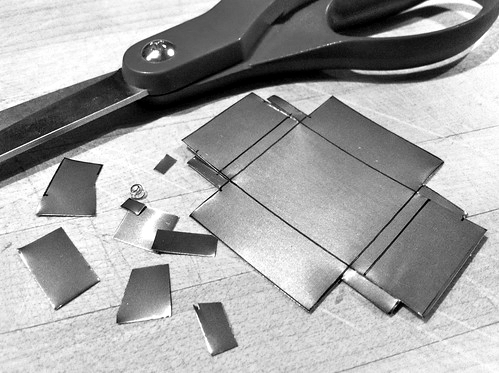
I used the straight edge of a metal ruler to help make neat folds in the foil, starting with the two legs flaps. I folded the legs upward first to form the sides of the tray. Then folded them over and back down along the line that you can see in the photo below. This fold was particularly tricky as there was no good way to lean or press against the ruler as a guide.
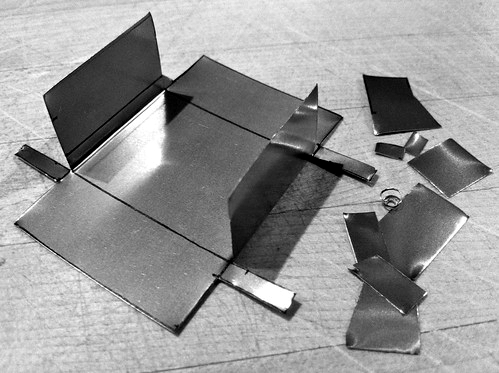
Here is a view of the stove turned upside down showing the two leg flaps being carefully folded back over. This was the hardest part or fold of the entire project. I ruined two versions of the titanium template by rushing this step, so take your time and think this fold through in your head.
Once I had the leg flaps almost were I needed them to be, I folded both pairs of the long tabs in and under the legs to form the corners of the tray.
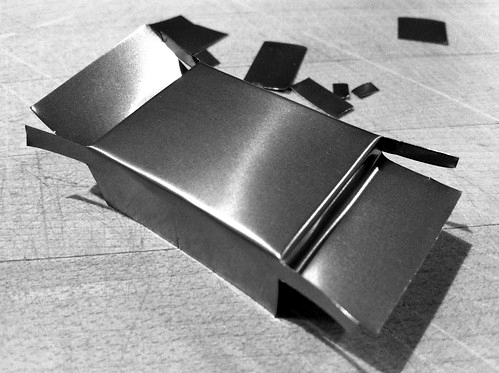
Then I flipped the stove back up the right way and slowly finished the bend of the legs. I ended up using a pair of lineman's pliers to neatly squeeze the folded edge of the legs and close up the crease. This would have been so much better via video!
After trimming off the tips of the corners to make it a little more finger friendly, the stove was all done! The aluminum prototype of this same stove weighed a whopping 4g on my regular electronic scales. The titanium version not only looked extremely cool, it weighed in at barely 1g.
I dug out my set of pocket scales to see if I could get a more accurate reading of the weight. By my pocket scales the titanium tray stove weighed 0.97g.
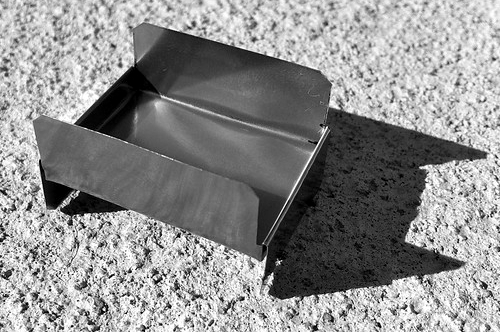
Next I think I'm going to start working on a titanium windscreen for this stove using some of the left over foil that I have. The pristine little titanium stove shown below no longer looks like that. I've burned a handful of Esbit tabs using it now and have had consistently good burn times of upward of 15 minutes.
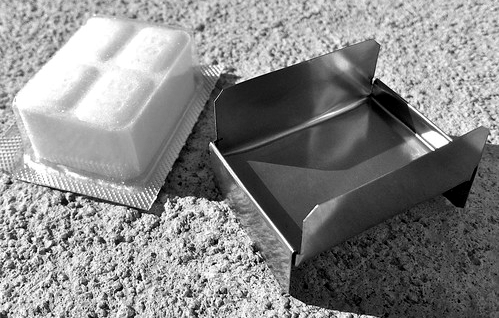
I'll admit that one significant downside of the 'tray' design is that it retains all of the crud and residue that get's left behind after burning an Esbit tab. If I recall, the main driving factor of John Roan's simple Esbit stove design was his reluctance to have to clean Esbit crud out of the creases of his Trail Designs Gram Cracker stove.
I'm actually okay with that though, at least for now. After more use I may get tired of the crud build up, but I still have a good case of STOS (Shiny Titanium Object Syndrome). We'll see how long that lasts before I get the urge to make a new stove.
I'm finally happy using Esbit fuel tabs. I'm definitely not head over heals in love with them, but I will be carrying this stove and a handful of fuel tabs with me on the next couple of backpacking trips that are coming up. You can download my template to make your own version of this stove here: Esbit Tray Stove Template (PDF). This is free for personal use, but NOT for commercial production and sale. Please contact me directly if you are interested in making this stove for commercial use.
Feedback from Fellow UL Backpackers
John Abela (HikeLighter.com): John recently posted a wonderful, detailed review and analysis of my titanium Esbit tray stove via his blog. John has forever coined the term "BGET" or Brian Green Esbit Tray - I love it! Thanks John.
John Donewar (Newton on BackpackingLight): I've found a reason for me personally to make the switch and scratched my MYOG itch at the same time. Thanks to the generosity of Brian Green posting a link to a pdf of a template for this stove on his backpacking blog I had an easy job of constructing this stove.
Andrew Weldon (hypnolobster on BackpackingLight): Wow, that's some exceptionally clean folding (Newton). Did you do it in the steps Brian Green wrote, or did you find a better way? I've made 3 now (backups), and while it's a piece of cake, it's never really gorgeous like that.Love the tray though. I'm getting 8-9m boils consistently and up to 15m usable burn, 18ish minutes total.
BGET Stoves on Internet
BackpackingLight.com All Topics - BGET
BGET - Titanium Solid Fuel Tray (BackpackingLight)
MYOG Brian Green Esbit Tray (BackpackingLight)
Brian Green Esbit Tray BGET (BackpackingLight)